- Home
- P. T. Deutermann
Trial by Fire Page 12
Trial by Fire Read online
Page 12
“How?” George asked without thinking. There were probably 500 men huddled on the forward part of the flight deck, most of them sitting or even lying down to stay out of the way of flying ordnance that was blasting out in all directions from the catastrophe behind them. But if the hangar bay was totally enveloped, none of them would be able to get down to a sponson, which were accessible only from the hangar deck.
The captain blinked several times, almost in time with the thunderous explosions erupting back aft. He was used to giving orders, not telling people how to carry them out. George realized his mistake.
“I’ll try to get below,” he said. “But we’re gonna have to make it skin to skin. Bring the destroyer alongside, tell him to push his bow under the sponson and then they’re gonna have to jump for it.”
“Admirals don’t jump from ship to ship, for Chrissakes,” the captain exclaimed.
“It beats swimming,” the admiral said, appearing behind the captain. He was gray-faced, just like the captain. “Think about what I said, Dick,” he said. Then he turned to George. “Find us a safe route to the forward sponson, get someone to lead the way, and tell your escort exactly what to do, just like you said.”
“Aye, aye, sir,” George said, suddenly realizing that the ship was doing a very slow, ponderous roll. Shit, he thought. We’re slowing down. Probably going to go dead in the water. The OOD was talking on the radio handset, so one of the emergency generators must have kicked in. He walked over and signaled that he wanted the handset. The OOD handed it over, almost gratefully.
“It’s the Smith Thompson who’s coming alongside,” the OOD said. “Call sign Red Dog.”
George keyed the press-to-talk button. “Red Dog, this is Rumble XO. Come alongside my starboard side and press your port bow against my hull under the forwardmost sponson and hold it there. We are going DIW. The admiral is transferring his flag to Warlord, over?”
The destroyer responded immediately. “This is Red Dog; WILCO. Out.”
WILCO, George thought. Short for “I will comply.” Good. That had been the destroyer’s skipper on the other end because only a ship’s captain could say WILCO. He tried using the electrical intercom, lovingly called the bitchbox, but then saw the red light was out. He then asked the terrified phone-talkers which one had DC Central. A sailor with 1JV stenciled on his steel helmet raised his hand.
“Tell Central I need a clear route from the bridge to the forward sponson, starboard side,” he ordered. “A destroyer is coming alongside to take off the flag and his staff.”
The talker repeated the message. Then he told George that Central needed to speak to him directly. George picked up a sound-powered handset, rotated the selector dial to 1JV, and then said: “XO here.”
“XO, this is Bill Harris, DCA. The normal route to the forward sponson is through the hangar bay. The entire, I repeat, entire hangar bay is on fire. We’ll get Repair One to rig a chain ladder from the forwardmost starboard side gun gallery down to the sponson. They’ll have to go down to the flight deck level inside the island, exit on the seaward side, go forward to the 20 mm nests in the catwalk, and then climb down the chain ladder to the sponson platform.”
“Okay, I’ll get the JOOD to lead them down.” He winced when three large explosions went off, big enough to shake the entire island. The bridge’s clock fell off its mount and shattered on the deck. “What’s the status on the gallery deck?”
There was a pause as Harris checked with his plotters. Then he was back. “There’s been approximately three hundred feet of deck heave, starting from the conflagration station and going forward. What’s left forward of that is being cooked.”
“Were the gallery deck spaces evacuated?”
“No, sir. Not as far as we know. It happened too fast.”
Jesus H. Christ, George thought. There would have been hundreds of people on the gallery deck, many of them pilots waiting for the order to man their planes. The term “deck heave” meant that the floor of the gallery deck had been crushed upward into the ceiling.
“XO, aye,” he sighed. “Inform the bridge when that ladder’s ready.”
“Central, aye.”
George walked back across the pilothouse to tell the captain about the arrangements being made to get Rear Admiral Davison and his people off. As he did so, there came a roaring noise from down on the flight deck. George got a momentary glimpse of a Tiny Tim rocket going forward up the flight deck at twice the speed of sound, climbing gracefully and then thundering off into the sea ahead of the ship, where it raised a big splash worthy of its warhead. Two more followed, one skewing sideways off the ship and blasting off in the direction of the Hancock. The second one slashed its way forward right down on the flight deck, carving a path of death and destruction through the pack of crewmen gathered on the extreme end of the flight deck at the bow. It disappeared off the bow, went skipping like a flat stone several times on the sea surface, and then exploded about a mile in front of the ship. George felt a thump on the ship’s starboard side.
“XO,” the OOD called. “Smith Thompson is alongside.”
He looked right and saw the radar antenna on the mast of a destroyer practically level with the bridge. He grabbed the junior officer of the deck’s elbow, gave him his instructions, and indicated to the admiral to follow him. He then called flag plot and instructed the staff to go down to the seaward side of the island at the flight deck level. Central called and said that Repair One had the ladder rigged and were ready to assist the admiral and his staff down to the sponson platform. At that moment, two more Tiny Tims lit off. One went off the ship to port and into the water. The other came forward, actually scraping along the flight deck side of the island in an unearthly screech before disintegrating just forward of the bridge. George saw the warhead section then go end over end down the flight deck, missing the forward five-inch mounts and the gun gallery where the admiral was headed by only a few feet, and then into the sea.
He looked back across the bridge to see the captain standing there, clenched hands at his side, obviously stupefied by the scale of what was happening. At that moment the shattered windows along the port side of the bridge were battered by a spray of seawater. George ran to the port side, overlooking the flight deck, and was amazed to see a makeshift firefighting crew struggling with a two-and-a-half-inch fire hose, trying to get it pointed back down into the raging gasoline fires behind the island. He looked for the chief in charge but then saw that the ragged crowd was being led by no other than Father Joe O’Callahan, his distinctive figure easily recognizable as he harangued men to join the effort and even helped wrestle the hose himself. A second firefighting team followed the chaplain’s lead and was trying to get their hoses close enough on the other side of the flight deck. Once again, there was a sudden, surreal smell of woodsmoke blowing through the bridge, but this time the flight deck itself was burning.
George felt a sudden wave of panic, but quickly got ahold of himself. The enlisted men standing around the bridge with their oversized sound-powered phone helmets tethered to phone lines were wide-eyed and looked, to a man, ready to bolt. They weren’t exactly reassured when screeching noises came from the starboard side as the destroyer tried to keep her bow plastered to Franklin’s sheer steel sides. George had never felt so helpless in his entire life. Flying a torpedo bomber against a Jap ship formation—that had been a piece of cake compared to this. The JA talker was signaling that he had a message.
“Captain, XO, light cruiser Santa Fe has been assigned to come alongside and render assistance.”
The captain acknowledged this news and went to the starboard bridgewing to see how the flag transfer was coming. Then he looked up at the signal bridge to see if they’d hauled down Admiral Davison’s two-star flag. Protocol, at a time like this, George thought. He looked out through the damaged bridge windows for the Santa Fe. She was passing down their port side at a range of about 1,000 yards, headed astern, where she’d then make a 180-degree turn and come
up alongside the Franklin’s starboard side after the destroyer broke away. As he watched her maneuver, a volley of six rockets spat out of that huge cloud of fire and smoke back aft and rained down in Santa Fe’s wake. Welcome alongside, George thought.
Something behind him caught his eye: it was the mast of the Smith Thompson pulling away from Franklin. She’d backed away and then come ahead, accelerating to get in front of the carrier, cross her bow, and then head for the Hancock, some two miles distant. The captain returned to the centerline pelorus. He took off his helmet and wiped his forehead with a handkerchief. The expression on his face indicated he felt as helpless as George did.
“Tell Santa Fe we need firefighting water into the hangar deck,” he said. “There’s nothing to be done for the flight deck.”
George was about to respond when a particularly nasty blast erupted aft. It sounded like a 1,000-pounder going off. A moment later parts of the ship’s enormous air-search radar antenna came crashing down on top of the signal bridge in a clatter of broken metal, while shards of red-hot bomb casing whined down the length of the flight deck and took out yet more of the helpless men huddled at the bow.
“We’ve got to get those people off the flight deck,” George told the captain, shouting now to make himself heard over the constant blasts behind them. “But they can’t go down into the ship. Gallery deck’s gone, and the entire hangar is afire. How’s about we get Santa Fe to do what Smith Thompson just did—come alongside and marry up. Those people trapped on the bow can go down ropes to her upper decks.”
“I will not abandon ship, XO,” the captain retorted. “No matter what the admiral said. If the rest of the crew sees that they’ll think the abandon-ship order’s been given.”
George took the captain’s left wrist in his right hand. “Listen to me, Captain,” he said. “The rest of the crew is either dead or trapped inside the ship,” he said, bluntly. “They’re not going to see anything that’s happening up front.”
The captain glared at him, but then relented and nodded. “Very well,” he said. “Make it so. Evacuate all nonessential personnel and anybody not necessary to saving the ship to Santa Fe.”
George got on the radio to the cruiser, which was approaching cautiously up Franklin’s starboard side. Cautiously because every cruiser skipper remembered what had happened to the cruiser Birmingham when she came alongside the stricken carrier Princeton at Leyte Gulf. When undetected fires reached Princeton’s magazines, the ship blew up, shredding everything and everyone along Birmingham’s starboard side. In just trying to help, the cruiser lost 229 men killed and more than 400 wounded.
Santa Fe’s damage control teams, collected on her upper decks, were already playing two-and-a-half-inch fire hose streams into the carrier’s open sponson doors from 100 feet away while periodically ducking as flaming fragments showered down upon them. As he watched, one of the Santa Fe’s firefighting crews had to drop their hoses and run for it when a sudden waterfall of burning gasoline swept across one of the sponson platforms and cascaded into the sea between the two ships, casting a ghoulish orange glow onto the sides of both ships.
22
J.R. now found himself crawling on the passageway deck, along with a crowd of sailors. He was frantically trying to remember the damage control diagrams for this part of the ship. They were on what was called the second deck, directly underneath the hangar deck. The invisible fires raging just above them were beginning to melt the cableways over their heads. Blobs of paint, fused insulation, and even molten copper were dropping on everyone’s head and shoulders.
Down, he thought, frantically. We have to get down, one more deck. He pushed his way through the crowd of huddled men to get to the head of the line. When someone objected, he said: “Fire marshal. Lemme through and I’ll get you out of this.”
That seemed to work. If his memory served him, there was a ladder about 100 feet ahead of their location that led down into the crew’s mess passageway on the third deck. It would have been dogged down for GQ, but GQ had been relaxed just before the bombs hit. With any luck, it might be open or at least undogged. He kept pushing, reciting his fire marshal mantra until he arrived at what was blocking the passageway: a waterfall. A really big waterfall, stinking of gasoline fumes and engine oil. There was another companionway leading up to the hangar deck right there, and thousands of gallons of water were crashing down into their passageway. He realized his shoes were already submerged. They couldn’t see the hatch above them because of all the smoke, but he thought he felt the beginnings of a starboard list coming on.
“Listen up,” he shouted. The hubbub in the passageway subsided, which made the sound of the bombs going off even scarier. “Guys at the front: Feel around the deck for a hatch coaming. There’s a way down to the messdecks in this passageway. Find it. It’s probably just ahead.”
Several men went down onto their hands and knees and frantically felt along the deck, which was now submerged in at least a foot of water that was clearly rising.
“Here,” a voice yelled.
J.R. scanned the bulkhead to find a dogging wrench. That suffocating smoke cloud was down to within four feet of the deck. Everyone was hunched over, gulping what was left of the breathable air. He knew that the wrench would be mounted higher than that. “Find the dogging wrench,” he yelled. “Feel for it on the bulkhead. It’s higher, in the smoke. You find it, sound off and don’t drop it.”
Thirty seconds passed. It was getting harder and harder to breathe. And hotter. Much hotter. Then a voice yelled: “Yo—I got it.”
Two men then attacked the submerged top of the hatch, one using the wrench to loosen the dogs under the rising water, the other getting them completely off until they said they had all the dogs undone.
“Bear a hand,” J.R. ordered. “This hatch is under a foot of water. Get around it and heave it up.”
As if glad to be told what to do, a crowd surged forward and bent their shoulders to lift the hatch. It didn’t budge.
“Check the dogs,” J.R. shouted. “Hand over hand. See if we missed one.”
Two men felt around the edges of the hatch under the rising water, then one called for the wrench and undid the final dog.
“Heave,” the crowd yelled. The smoke was almost in their faces now, thick, heavy, oily, and tasting of sulfuric acid. The water was halfway to everyone’s knees.
Then the hatch came up, instantly creating another waterfall down into the ladderway. Below there was battle lantern light and, most importantly, no smoke. J.R. crouched down against a bulkhead and shouted for them to go, go, go! No one needed encouraging. He heard shouts of alarm from below as over a hundred men came scrambling past and then went dropping and even falling down that ladder, accompanied by a muscular flow of water. When the last head disappeared below the hatch coaming, J.R. stepped down onto the ladder, took two steps, and then pushed the hold-back latch off its hook. The hatch came down, faster than he expected, pushing him down the ladder hard enough that he basically fell down its entire length. But with the hatch down, the waterfall subsided.
J.R. looked around. He was in the vestibule that led to the messdecks. He saw a crowd of men looking back at them from the messdecks, which was lit only by battle lanterns. There was a haze of steam and smoke hanging just below the overhead. The nearest man was a chief petty officer.
“I sure hope you know a way out of here, sir,” the chief said quietly. “Everything’s burning forward, and I think we’re gonna run out of air.”
23
Gary and his Number Two Firehouse crew stepped cautiously out of the companionway vestibule and looked around the dark passageway. The air was hot and smelled dangerously of gasoline fumes. The passageway stretched back aft a few hundred feet into total darkness, where Gary knew there were storerooms, the reefer decks, the crew’s galley, and the Marine detachment berthing. There were only two battle lanterns shining that he could see, but there appeared to be a dull but fierce red glow all the way at the very
back end of the passageway. They were now above the fireroom, and they could hear and feel the detonations on the flight deck and, even closer, the hangar deck. Every time a bomb went off, Gary saw that red glow way back there brighten momentarily, as if applauding.
“What is that?” his chief asked, staring into the darkness.
“Really hot steel, I’m afraid,” Gary said. “There must be the fire to end all fires on the other side of that hatch.”
“Jee-zus,” the chief said. “Now where do we go?”
Four big booms came in succession, starting a rain of dust from the cableways stretched along the overhead. One of the men began coughing uncontrollably. The others were too busy being scared to death to notice. Gary turned around to look forward. There were no battle lanterns shining, but there seemed to be a low current of hot air coming toward them from the darkness.
But no red glow, Gary told himself. Good deal. But then came a blast that sounded like it was at their level in the ship. Gary caught a split-second glimpse of a thin yellow-white rectangle in the distance, about the size of a watertight hatch. Then came a fireball headed straight at them.
“Do-w-w-n!” he yelled at the top of his voice. They all hit the deck and then were treated to a momentary session under a broiler as the fireball whumped down the passageway in search of that glowing hatch. Suddenly it was really hard to breathe. Gary realized that the fireball had consumed precious oxygen. There was only one thing to do.
“Back down the escape trunk,” he yelled. “Hustle—air’s going fast.”
The two men nearest the escape trunk hatch just stared at him, but then the chief was right there, spinning the dogging wheel and then lifting the round scuttle. He then grabbed the nearest man by the shirtfront and shoved him into the hole. The rest quickly followed until Gary, the last man remaining in the rapidly rising heat of the passageway, dropped through the scuttle and pulled it shut behind him. He held on to the brass handle to catch his breath but then had to let go and grab for the ladder when the wheel began to singe his hands. He looked down. His entire crew was hanging on the ladder in various poses, their frightened faces illuminated by flickering battle lantern light. They looked like pieces of laundry with their OBA masks dangling off to one side of their soot-covered faces, one hand on the ladder, the other covering their faces.

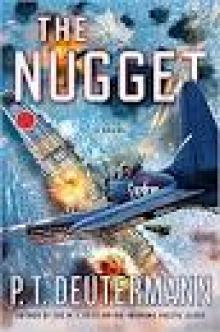 The Nugget
The Nugget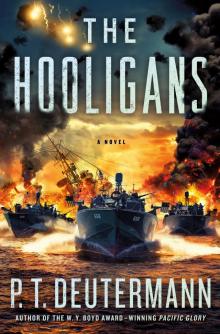 The Hooligans
The Hooligans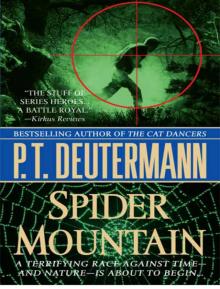 SPIDER MOUNTAIN
SPIDER MOUNTAIN![Cold Frame [retail] Read online](http://i1.bookreadfree.com/i/03/19/cold_frame_retail_preview.jpg) Cold Frame [retail]
Cold Frame [retail] Sweepers
Sweepers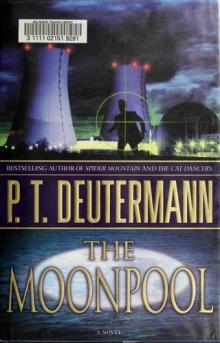 Cam - 03 - The Moonpool
Cam - 03 - The Moonpool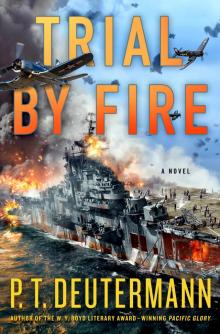 Trial by Fire
Trial by Fire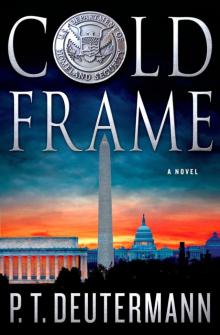 Cold Frame
Cold Frame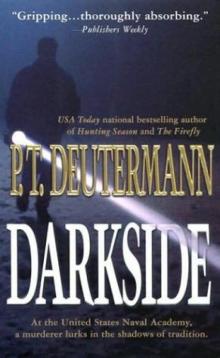 Darkside
Darkside Cam - 04 - Nightwalkers
Cam - 04 - Nightwalkers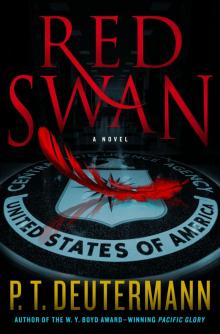 Red Swan
Red Swan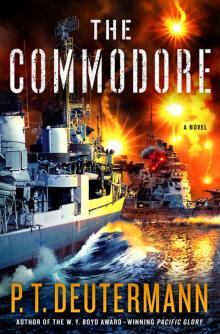 The Commodore
The Commodore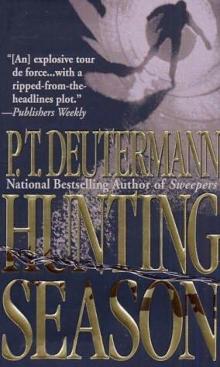 Hunting Season
Hunting Season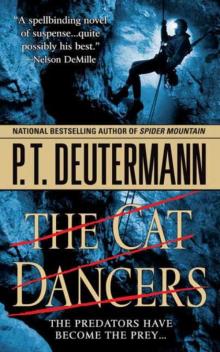 The Cat Dancers
The Cat Dancers Scorpion in the Sea
Scorpion in the Sea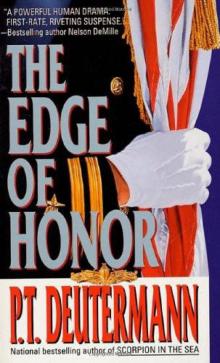 The Edge of Honor
The Edge of Honor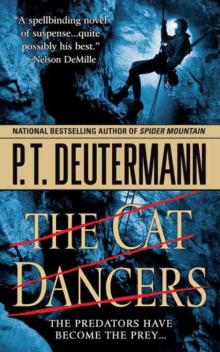 The Cat Dancers cr-1
The Cat Dancers cr-1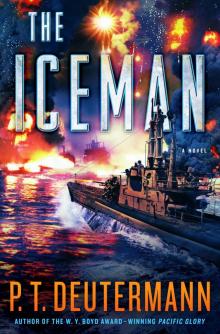 The Iceman
The Iceman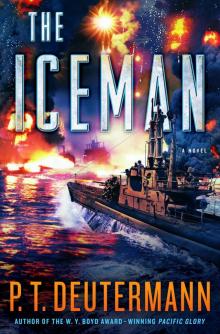 The Iceman_A Novel
The Iceman_A Novel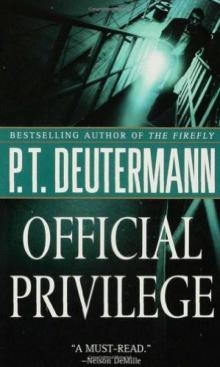 Official Privilege
Official Privilege Sentinels of Fire
Sentinels of Fire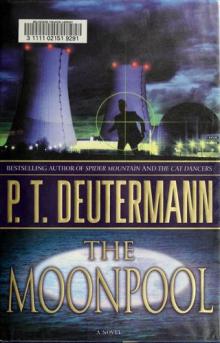 The Moonpool cr-3
The Moonpool cr-3 Nightwalkers cr-4
Nightwalkers cr-4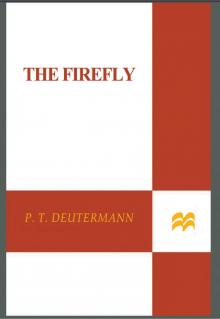 The Firefly
The Firefly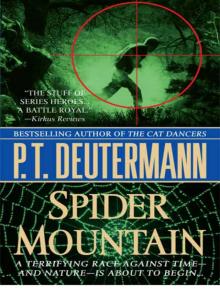 Spider mountain cr-2
Spider mountain cr-2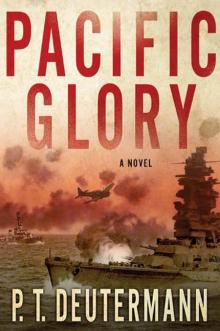 Pacific Glory
Pacific Glory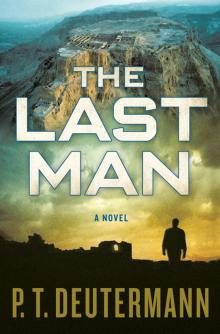 The Last Man
The Last Man